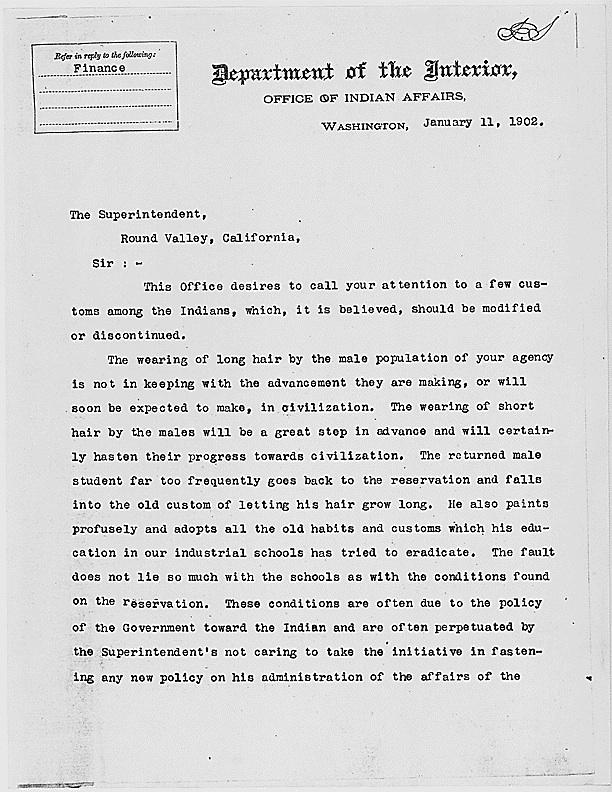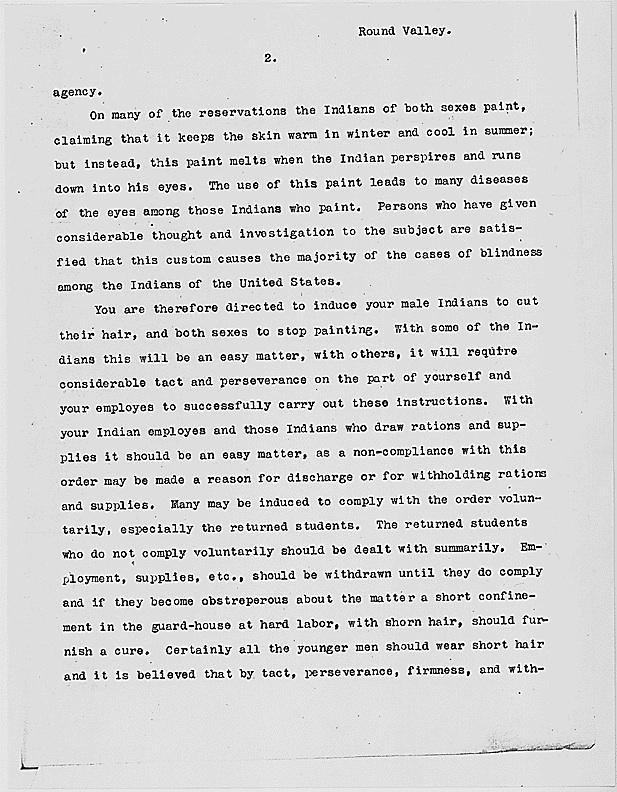The Vault is Slate’s history blog. Like us on Facebook, follow us on Twitter @slatevault, and find us on Tumblr. Find out more about what this space is all about here.
Commissioner of Indian Affairs William Atkinson Jones sent this letter to superintendents of all federal reservations and agencies in January 1902. The notorious missive soon became known as the “haircut order.”
Jones observed that many Native Americans continued to wear their hair long, to “paint,” and to participate in tribal dances. The commissioner objected to these traditions on a number of grounds, arguing that dancing and feasting were “simply subterfuges to cover degrading acts and to disguise immoral purposes,” that painting caused people to go blind, and that long hair simply was not “in keeping with the advancement they are making … in civilization.”
Jones suggested that superintendents could induce compliance by holding back rations and required a report on the progress of these efforts by June 30, 1902.
News of the letter and its contents made national news, with many observers outraged at the order. In the Harper’s Weekly’s edition of Feb. 8, 1902, the anonymous editors wrote a paragraph that was supportive of the Native Americans’ practices, if grossly condescending:
The red man has neither newspapers, letters, books, nor games to break the monotony of his life. He loves company. He gets all his news, all his pleasures, in daily contact with his fellows. He has always lived in a village.
Rather than being forced to submit to “government shears,” the editors argued, the young Native American should be “educated along the line of his natural aptitudes, teach him to adapt to new conditions step by step.”
This type of outcry, coupled with even worse publicity after a few supervisors used harsh methods to enforce Jones’ order, caused the Bureau of Indian Affairs to back down. New directives advised agents that they should use persuasion and example, rather than force, to get Native Americans to dress like “citizens.”
The bureau tried for decades to eliminate ceremonial dances. By the 1920s, however, more and more tribes held annual gatherings based on these traditions, which survived despite the BIA’s disapproval.

Letter from William Jones to Superintendent, Round Valley, CA. National Archives, Records of the Bureau of Indian Affairs.

Letter from William Jones to Superintendent, Round Valley, CA. National Archives, Records of the Bureau of Indian Affairs.

Letter from William Jones to Superintendent, Round Valley, CA. National Archives, Records of the Bureau of Indian Affairs.